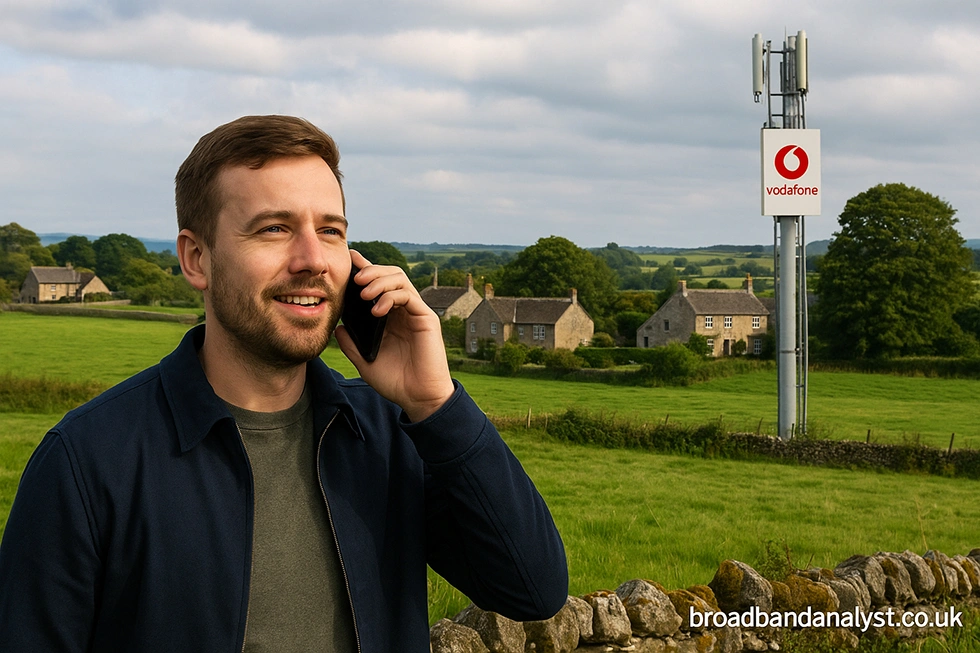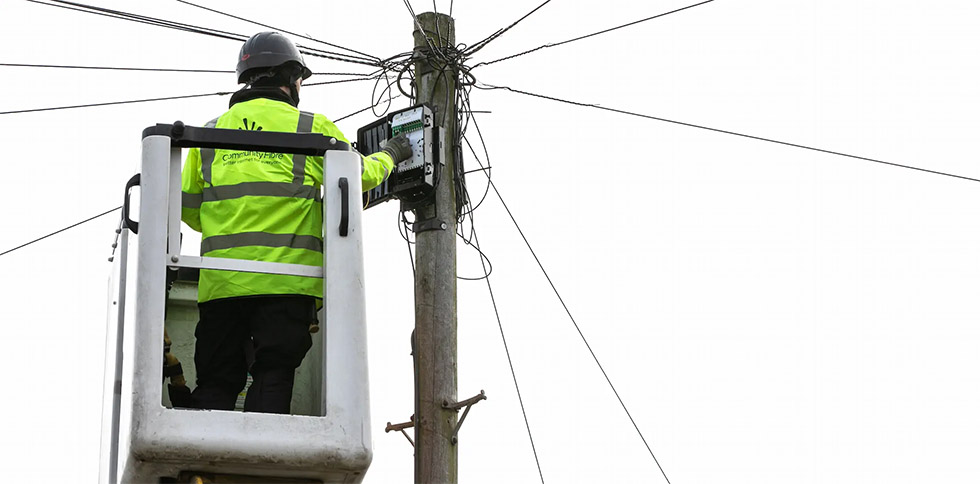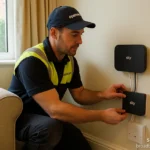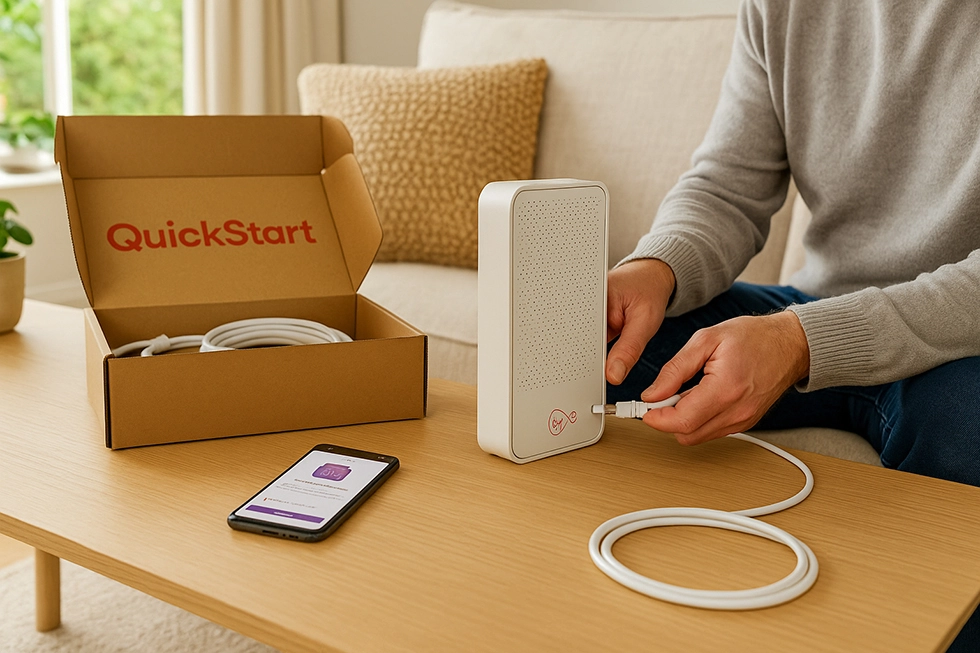Vodafone has carried out a 5G trial in Germany that reached download speeds of 2.5Gbps by tapping into the upper 6GHz spectrum band. The demonstration used 200MHz of spectrum and a smartphone chipset from MediaTek, showing how future 5G and 6G networks could gain extra capacity if regulators free up this band for mobile use.

What Vodafone tested
The trial took place in Hannover and involved combining multiple carriers in the 6GHz band through carrier aggregation. Using a standard smartphone platform with MediaTek’s M90 modem, the network delivered peak download rates of around 2.5Gbps and uploads between 50Mbps and 180Mbps. Vodafone hasn’t shared full details such as distances or cell layout, but the test was designed to highlight the potential of wide 6GHz channels for mobile broadband.
The operator also compared 200MHz and 100MHz channels. Results showed that doubling the channel width nearly doubled data throughput without using more power. For network planners, that suggests more efficient use of spectrum and greater capacity for crowded areas like stadiums, shopping centres, and transport hubs.
Why the 6GHz band matters
The upper 6GHz band (6425–7125 MHz) is a contested slice of spectrum. Wi-Fi 6E and Wi-Fi 7 are already expanding into this range, but mobile operators argue that dedicating part of the band to 5G and eventually 6G would relieve pressure on existing mid-band spectrum.
The key advantage is bandwidth. While today’s 3.5GHz 5G networks typically operate in 80MHz or 100MHz blocks, 6GHz can support much wider channels. Wider spectrum means more throughput per user and more capacity per site, provided devices and base stations can support it.
Indoor use is another driver. A large share of mobile data consumption happens indoors, and 6GHz could provide an extra layer of coverage in busy areas. The trade-off is shorter reach compared with lower bands, which means operators need denser site deployments to make it effective.
The regulatory picture in Europe and the UK
Spectrum use in this band is being debated by regulators across Europe. The European Commission is awaiting final recommendations from the Radio Spectrum Policy Group on how the 6GHz band should be allocated in the long term. That opinion is expected in late 2025, but harmonisation across the continent may not finish until 2027.
In the UK, Ofcom has suggested an approach that initially prioritises Wi-Fi, before later allowing mobile operators to share access. The plan is to reserve between 160MHz and 400MHz of the band for Wi-Fi, with at least 300MHz earmarked for mobile use once European decisions are clearer. That means UK operators such as Vodafone are unlikely to deploy 6GHz 5G commercially until the end of the decade.
What needs to happen before consumers see 6GHz 5G
Vodafone’s test shows what’s technically possible, but several steps must be taken before this spectrum appears in real-world networks. First, regulators need to confirm how the band will be divided between Wi-Fi and mobile. Second, device manufacturers must support the band in their smartphones, routers, and modems. The MediaTek M90 used in the demo already supports 6GHz carrier aggregation, but it will need wider adoption across consumer devices. Finally, mobile operators will need to densify their site grids and ensure backhaul networks can handle the extra capacity.
Vodafone’s current 5G and broadband services
While 6GHz mobile is still years away, Vodafone already provides 5G services through its existing spectrum in the UK. The company offers 5G Home Broadband through its GigaCube router, giving households wireless access where fibre isn’t yet available. Typical performance depends on coverage and network load, but it can provide a useful alternative to fixed lines.
For fixed broadband, Vodafone delivers full fibre packages over both Openreach and CityFibre, with speeds reaching up to multi-gigabit in some locations. Customers can choose between different tiers depending on their needs, and Vodafone now offers Wi-Fi 6E capable routers on faster fibre plans.
What the test really shows
The Hannover demo is less about headline speed and more about capacity. Wider channels at 6GHz let operators serve more users in crowded environments without increasing energy use. The technology is well suited to high-traffic areas like stadiums, airports, or business districts.
The other big point is coexistence. Wi-Fi and mobile operators are both competing for the same frequencies, and regulators need to decide how to balance the two. In practice, households and businesses will rely on both – Wi-Fi for local networks and 5G/6G for outdoor and wide-area connectivity.
Looking ahead
For consumers, the outcome of spectrum debates in Brussels and London will shape whether 6GHz strengthens Wi-Fi, mobile, or both. Vodafone’s test adds weight to the case for mobile operators, but decisions won’t be finalised for several years.
In the meantime, customers can expect upgrades on today’s networks: faster fibre rollouts, improved Wi-Fi technology, and ongoing 5G enhancements on existing bands. Multi-gigabit speeds are already arriving in homes via fibre, while mobile will gradually close the gap as new spectrum becomes available.










